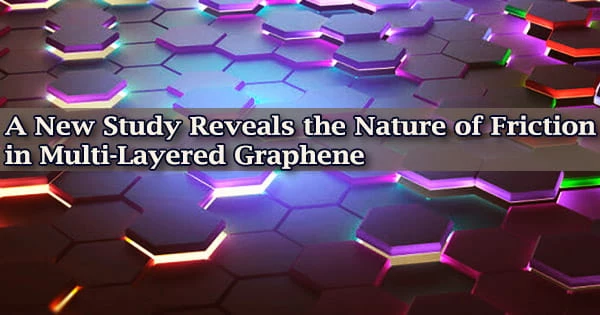Although multi-layered graphene is a promising carbon-based nanomaterial for a number of next-generation technologies, the links between its surface textures and characteristics are not completely understood.
In a new study, researchers from Pusan National University look at how surface characteristics such as wrinkles and folded networks effect nanoscale friction in multi-layered graphene. Their discoveries could pave the way for graphene-based solid lubricants and micro/nanomechanical devices.
The poster child of carbon-based 2D nanomaterials is graphene, which is made up of a single layer of carbon atoms. It possesses a number of appealing features that could be used in next-generation electronics, optics, catalysis, biomedicine, and a variety of other applications.
In place of the well-established approach of mechanical exfoliation, which can only produce small graphene islands, several scientists have recently concentrated on chemical vapor deposition (CVD) as a cost-effective strategy for manufacturing larger graphene surfaces.
CVD graphene, on the other hand, has a variety of surface features and imperfections, including as wrinkles, crystal grain boundaries, and contamination. Because graphene is so thin, even slight surface abnormalities can have a big impact on its properties, so studying its surface-property correlations is crucial.
Graphene and similar materials can be used as solid lubricants; Whereas liquid lubricants like motor oils are not suitable for harsh environment such as outer space or the polar regions, the excellent robustness and frictional properties of graphene make it an attractive non-toxic alternative.
Songkil Kim
While there have been numerous research on how surface features affect the nanoscale friction characteristics of multi-layered CVD graphene, few have focused on how surface structures affect the nanoscale friction characteristics of multi-layered CVD graphene.
This information gap was recently addressed by a team of academics from Pusan National University in Korea, lead by Assistant Professor Songkil Kim.
“Correlating surface characteristics with a material’s properties is really important,” explains Dr. Kim, “Imagine you are stacking papers, and there is a huge compressive strain over these papers. This could cause massive structural deformations within the stacked layers and the surface. Similarly, the structural changes that occur in multi-layered graphene can affect its surface properties, such as its friction, which is what we focused on.”
Their paper was made available online on January 24, 2022, and published in Volume 584 of Applied Surface Scienceon May 15, 2022.
The researchers began by scratching the surface of CVD multi-layer graphene with the atom-sized tip of an atomic force microscope (AFM), removing any polymeric residues. The researchers next employed AFM imaging, friction force microscopy, and Raman spectroscopy to identify and investigate diverse surface features and their effects on nanoscale friction.
They discovered that only the top-most layer of graphene was twisted in relation to the remainder, affecting layer-dependent nanoscale friction in a way that varied depending on the applied force.
Overall, the findings of this work may open the way for novel mechanical uses of CVD graphene.
“Graphene and similar materials can be used as solid lubricants,” comments Dr. Kim, “Whereas liquid lubricants like motor oils are not suitable for harsh environment such as outer space or the polar regions, the excellent robustness and frictional properties of graphene make it an attractive non-toxic alternative.”
Developing high-performance lubricants provides environmental advantages, as minimizing friction is necessary to avoid energy losses in mechanical systems. Another application for multi-layered CVD graphene could be in micro/nano-devices that require fine friction control.





